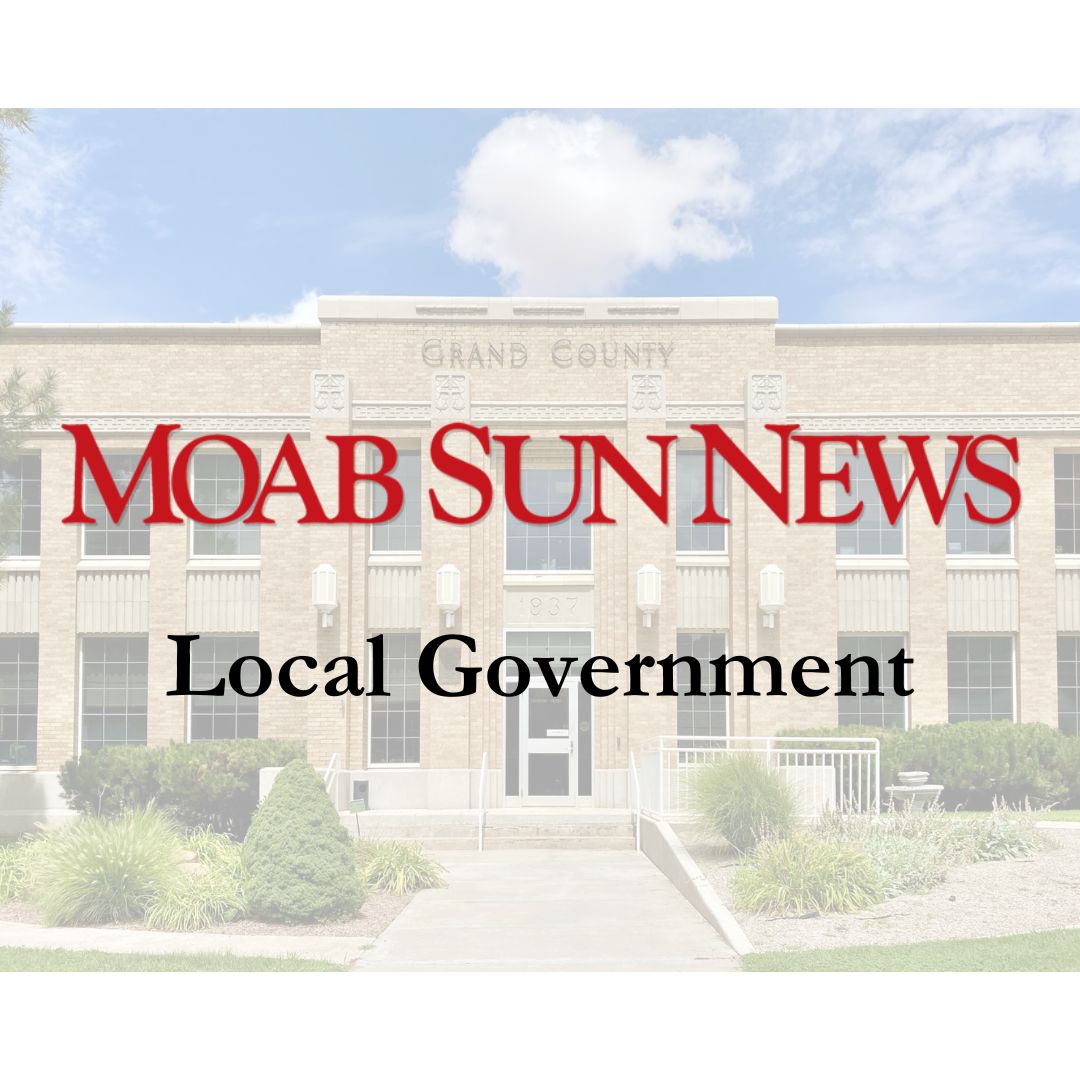The City of Moab has hired a new sustainability director: Alexi Lamm, who started on Sept. 26. The prior director, Mila Dunbar-Irwin, left the position in April.
Lamm has been working in sustainability for ten years, she said, and got her start in the Peace Corps. She earned a master’s degree in public affairs from Indiana University, with an emphasis on environmental policy and natural resource management, and has since earned a Ph.D. Lamm also worked as Utah State University’s first sustainability coordinator, which was the position she held before coming to Moab.
During the regular city council meeting on Sept. 27, Lamm presented her priorities to the council.
First, she wants to work on the City’s dark sky regulations—in August 2019, the then-council unanimously voted to require that all outdoor lighting on residential and commercial properties conform to International Dark Sky Standards within five years (August 2024).
During the meeting on Sept. 27, City Planner Cory Shurtleff presented a few upcoming changes to the dark sky ordinance. Shurtleff recently found that the city’s lighting requirements and its safety requirements at times contradicted each other—most safety lights are not technically dark sky compliant—so he proposed that all safety, emergency, traffic, pathway, holiday, and temporary lighting fixtures, including bistro lighting, be exempt from the dark sky lighting requirements.
Shurtleff also asked councilmembers to think about three things: how the city could handle zoning-specific lighting hours—if certain hours within certain zones could be exempt from the dark sky requirements; lighting for federal or state flags, since flags are typically lit from the bottom up; and ground-mounted illumination for signs, another bottom-up issue. For context, he said, the Grand County Planning Commission agreed that the county should disallow bottom-up lighting for signs.
Those changes to the ordinance are forthcoming—the city council will vote on an updated ordinance at a later date. Businesses and homeowners would have until August 2024 to come into compliance. If they aren’t in compliance by that date, they’d become “legal nonconforming,” meaning the business would still be able to operate, but would not be able to apply for any business licenses or building permits until they fixed the lighting.
Lamm said she also wants to continue prioritizing Moab’s place in the Utah 100 Communities project: through the project, Moab set a goal to transition to net-100% renewable energy by 2030. Lamm said she also wants to prioritize and update Moab’s water resource management plan and landscape ordinance.
Another priority on Lamm’s list is to enhance Moab’s recycling outreach: she wants to develop strategies to increase the city’s diversion rate (the amount of waste that goes to recycling), which is currently at 11%.
Lamm’s final priority is to complete Moab’s sustainability plan, which hasn’t been able to get off the ground since 2019. That year, the sustainability director at the time, Rosemarie Russo, tried to create a “Sustainability Action Plan” which outlined ambitious goals. But when the plan came before the city council, seven times, it continuously fell apart—Councilmember Kalen Jones criticized the document for not including councilmembers’ suggestions and for grammatical errors—and never appeared before the council for final approval. Russo left the sustainability director position, and Dunbar-Irwin also never finished the plan during the year she held the position.
Lamm noted that the current 2019 draft has “several strengths,” and she plans to “update and re-work the plan to outline the next steps and implement goals.”
“I think that as we look forward, it’s going to be important to update the plan and re-work it,” she said. “We want to make sure that our goals are not just aspirational, but also achievable.”




